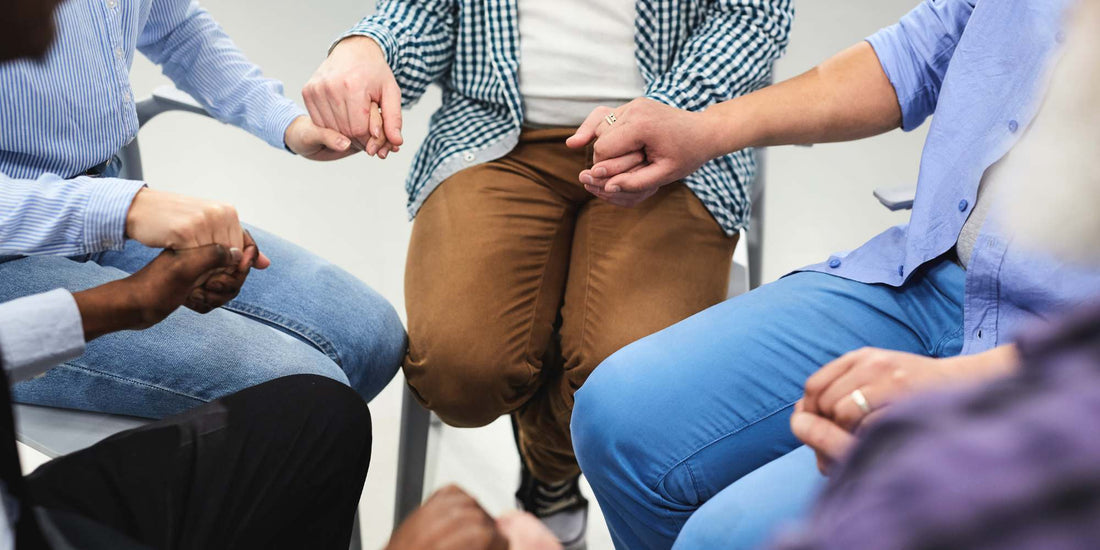
What Are Healing Circles? A Guide to Nurturing Wellness Together
In the heart of community wellness lies a transformative practice known as Healing Circles. These gatherings offer a unique space for individuals to come together, share their experiences, and support each other in their healing journeys. But what exactly are Healing Circles, and how do they foster an environment of collective healing and growth? Let's delve into the essence of these circles and uncover their potential to nurture wellness.
So What Are Healing Circles?
Healing Circles are gatherings that provide a safe, supportive environment where individuals can share their stories, challenges, and successes related to healing. Rooted in ancient traditions, these circles are based on the principle that the process of healing is not just physical but also emotional, mental, and spiritual. They operate on the belief that each person's journey is unique, yet sharing and listening within a community can lead to profound personal and collective healing.
What Are The Principles of The Healing Circle?
The foundation of Healing Circles lies in a set of guiding principles that ensure a safe, respectful, and nurturing environment for all participants: Here is a list of core principles that should be respected in healing cirles.
Safety and Trust:
Creating a safe and confidential space is paramount. Participants must feel secure in sharing their experiences without fear of judgment or repercussions.
Respectful Listening:
Active and respectful listening encourages an environment where every voice is valued and heard.
Equality and Inclusivity:
Everyone in the circle is seen as equal, and the circle is open to all who are drawn to it, regardless of their background or beliefs.
Openness and Honesty:
Participants are encouraged to share their truths openly, fostering a culture of honesty and vulnerability.
Compassion and Non-judgment:
The circle operates from a place of compassion, without judgment, recognizing that each person's path to healing is unique.
Shared Leadership:
While facilitated, Healing Circles often encourage shared leadership, with participants taking turns guiding the circle or parts of it.
Confidentiality:
What is shared in the circle stays within the circle, building a foundation of trust and mutual respect.
How do You Conduct a Healing Circle?
Organizing and facilitating a Healing Circle involves careful consideration and preparation. To conduct a Healing Circle effectively, follow these steps:
Preparation:
- Select a quiet, comfortable space conducive to openness and reflection.
- Determine the circle's structure, including its duration, frequency, and opening/closing rituals.
- Establish ground rules based on the principles of Healing Circles to ensure a safe and respectful environment.
Opening the Circle:
- Begin with a moment of silence, meditation, or a short ritual to center the group and signal the start of the sacred space.
- Introduce the circle's purpose and remind participants of the principles and ground rules.
Sharing Within the Circle:
- Encourage participants to share their stories, feelings, or reflections. A talking piece can be passed around to designate the speaker.
- Ensure that listening is done with empathy and without interruption.
Closing the Circle:
- Conclude with a ritual or activity that signifies the end of the shared time and helps participants transition out of the circle's space.
- Express gratitude for the shared experiences and the collective presence.
What Are The Topics For Healing Circles?
The topics for Healing Circles can vary widely, depending on the needs and interests of the participants. Some common themes include:
Grief and Loss:
Providing a space for sharing experiences of loss, whether it be the loss of a loved one, a relationship, or an aspect of self.
Health Challenges:
Supporting those facing health issues, whether physical or mental, and sharing ways to navigate the healing journey.
Life Transitions:
Exploring the challenges and opportunities presented by major life changes such as moving, career changes, or entering retirement.
Stress and Anxiety:
Offering strategies and support for managing stress, anxiety, and other mental health concerns in a supportive environment.
Spiritual Growth:
Discussing spiritual experiences and paths, and how spirituality can support healing and personal growth.
Personal Development:
Focusing on self-improvement, including building resilience, fostering self-love, and developing healthier relationships.
The Benefits of Participating in Healing Circles
Healing Circles offer numerous benefits, including:
Emotional Support: They provide a platform for emotional release and understanding, which is crucial for healing.
Community Connection: Participants often feel a deep sense of belonging and connection with others, reducing feelings of isolation.
Diverse Perspectives: Sharing and listening to varied experiences can offer new insights into one’s healing journey.
Holistic Healing: The circles address healing from a holistic perspective, recognizing the interconnection of mind, body, and spirit.
Healing Circles represent a powerful avenue for holistic healing, grounded in the principles of empathy, shared experience, and mutual support. By participating in these circles, individuals can embark on a path of healing that not only nurtures their well-being but also strengthens the fabric of the community. As more people discover the benefits of Healing Circles, we move closer to a world where healing is a shared journey, and wellness is a collective achievement.










1 comment
I am in my late sixties.Wheb HIV and AIDS hit our community infected men and their friends started healing circles They were open to all with emphasis on healing the sick These circles were just as u describe and very EFFECTIVE in. dealing with the issues the groups faced.